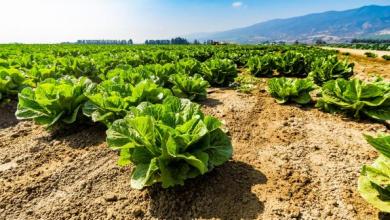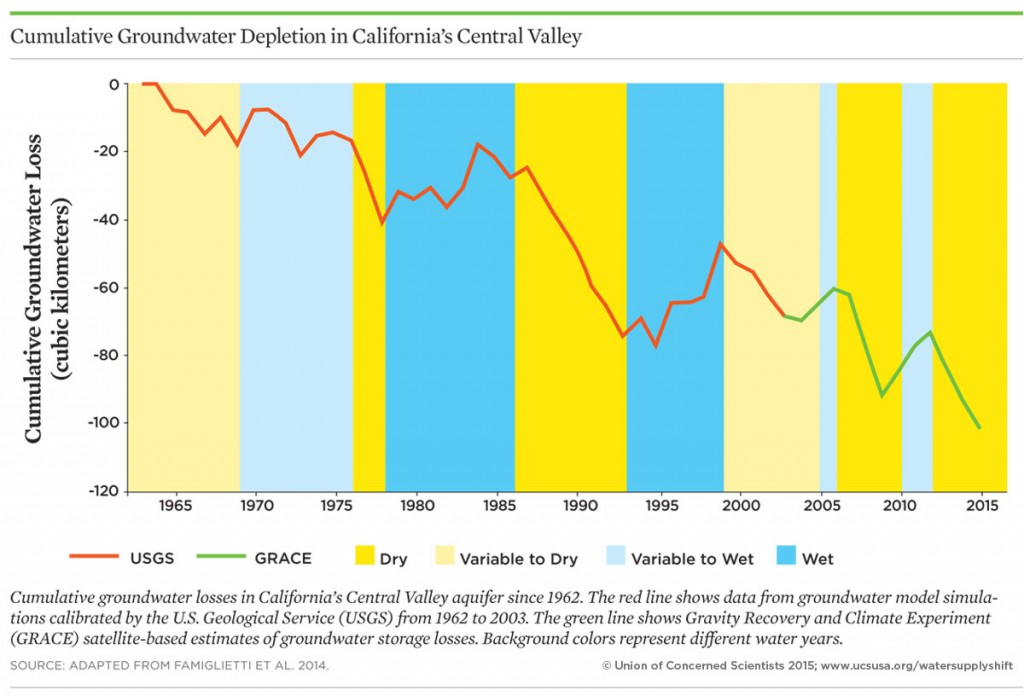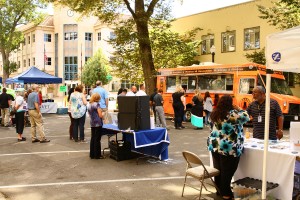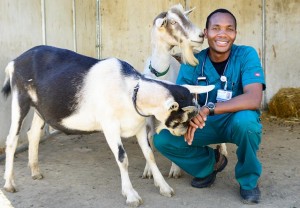
El Nino-related flooding in Paraguay.
By Henry Fountain
In rural villages in Africa and Asia, and in urban neighborhoods in South America, millions of lives have been disrupted by weather linked to the strongest El Niño in a generation.
In some parts of the world, the problem has been not enough rain; in others, too much. Downpours were so bad in Paraguay’s capital, Asunción, that shantytowns sprouted along city streets, filled with families displaced by floods. But farmers in India had the opposite problem: Reduced monsoon rains forced them off the land and into day-labor jobs.
In South Africa, a drought hit farmers so hard that the country, which a few years ago was exporting corn to Asian markets, now will have to buy millions of tons of it from Brazil and other South American countries.
“They will actually have to import it, which is rare,” said Rogerio Bonifacio, a climate analyst with the World Food Program, a United Nations agency. “This is a major drought.”
The World Health Organization has estimated that worldwide, El Niño-related weather is putting 60 million people at increased risk of malnutrition, water- and mosquito-borne diseases, and other illnesses.
Scientists began reporting early signs of El Niño conditions early last year, based on changes in surface-water temperatures and atmospheric pressure in the equatorial Pacific. By midyear, the World Meteorological Organization declared that El Niño was in full swing and that it was on track to be the strongest such event since 1997-98.
An El Niño occurs on average every two to seven years, when warm Pacific water shifts eastward, creating an immense warm zone in the central and eastern Pacific. This adds heat and moisture to the air, which condenses high in the atmosphere, releasing energy that affects the high-altitude winds known as jet streams that circle the planet. The warmer the ocean, the more energy that can potentially be released.
One effect of the energy is that it alters the course of a jet stream. In the Northern Hemisphere, this can bring more winter storms to the southern United States, including Southern California.
But adding all that energy to the upper atmosphere can also introduce a ripple in a jet stream that may affect weather halfway around the world. “It’s like waving a paddle back and forth in the stream and generating planetary-scale atmospheric waves,” said Michael McPhaden, a senior scientist with the National Oceanic and Atmospheric Administration.
That leads to patterns of precipitation, or lack of it, that can pop up in far-flung regions at different times — heavy rains in south-central South America from September to January, increased dryness in Central America for much of the year and a reduced summer monsoon in India, among other effects.
Because these patterns often recur in different El Niño years, the effects can be predictable. Nonetheless, they can still test the ability of governments and aid agencies to respond.
El Niño often affects parts of Ethiopia, for example, and this time was no exception. It is among the countries worst hit by drought, Dr. Bonifacio said, with as many as 10 million people in need of food assistance. Yet Ethiopia is handling the problems largely on its own. “They made a decided effort to deal with the situation,” he said.
But as the lack, so far, of prolonged rains in Southern California this winter shows, the effects of El Niño can still be difficult to forecast.
Dr. Bonifacio noted, for instance, that the Sahel in Africa often suffers drought in El Niño summers, but last year, after a dry June, rains picked up. “From July onward, things just flipped over completely,” he said.
El Niño does not just affect people. The National Oceanic and Atmospheric Administration said this month that the concentration of carbon dioxide in the atmosphere — an important climate-change measurement — had the greatest year-to-year increase in 56 years, and that the rise was partly because of the effect of El Niño-related weather on vegetation. More drought, for example, means less growth of plants that absorb carbon dioxide from the air.
Here is a closer look at how El Niño has disrupted life in different parts of the world.
A Blow to India’s Monsoons
MAHOBA DISTRICT, India — For the first time in his life, Jeevan Lal Yadav has been getting his wheat and vegetables from the market five miles away, rather from than his own farm.
Mr. Yadav, 43, has not been able to grow anything this past year on the five acres he cultivates here in the heart of northern India, parts of which are experiencing a severe drought.
He is one of millions struggling after a strong El Niño led to reduced rain from the southwest monsoons.
Rainfall in 2015 from monsoons, which sweep over most of India from June to September, was 14 percent below the average. The reduction was more than 40 percent in some areas, including India’s most populous state, Uttar Pradesh, where Mr. Yadav lives.
Because most Indians are farmers, and a majority rely entirely on the monsoon rains, a blow to the rainy season is devastating, rendering lives barely recognizable.
Instead of guarding his annual harvest against wild buffalo, as he has done for as long as he can remember, these days Mr. Yadav sits among a crowd outside the door of the village headman, hoping to get picked for a public works program that pays 161 rupees (about $2.40) a day. His name is called every other day at best, he said.
“I’ve never seen something like this,” he said, outside his two-room mud hut in Thurat, a village of several hundred homes surrounded by dried ponds and mostly barren fields that in years past were green with a harvest of wheat and lentils at this time of year. “It’s all dry. I didn’t even sow the seeds.”
Compounding the effects of the El Niño-induced drought this past year is that much of India also suffered from mild El Niño in 2014 that reduced monsoon rainfall by 12 percent. Two successive years of drought hit farmers so hard that Prime Minister Narendra Modi focused his annual budget message last month on programs to improve crop insurance and credit, build irrigation systems and continue the rural employment program on which Mr. Yadav now relies.
These programs have existed to varying degrees for years in rural India but have been inadequate, said Vineet Kumar, a climate change officer at the Center for Science and Environment, a New Delhi nonprofit organization that studies farmers’ problems. He said Mr. Modi’s plans had the potential to help farmers but would be too late for millions like Mr. Yadav.
D. S. Pai, the deputy director general of the long-term monsoon forecasting division at the Indian Meteorological Department, said India predicted the blow to the summer monsoon, which had happened in previous El Niño years. (This El Niño was also linked to heavier-than-normal rainfall last fall in the southern tip of India and Sri Lanka.)
Dr. Pai said his department worked with district officials to inform farmers by text message of long-term predictions and warned them about more immediate outbreaks of bad weather.
Mr. Kumar, of the nonprofit group, said that though the warnings may be issued from the top, there was not enough coordination in many states and districts for the news to reach farmers on time.
And so Pratap Singh, 65, in the Kidhari village, also in the Mahoba district, had not been alerted when, after months of dry weather, rain suddenly arrived in October, soaking the small harvest of wheat he had laid out to dry. The heavy rainfall rotted the 220 pounds of grain, which was only 20 percent of his usual harvest, he said.
Now, with no harvest at all, Mr. Singh said, he and his two adult sons are working when they can as day laborers at a brick kiln. The days they are not hired, he said, they just sit around “whiling away our time — there’s nothing to do.”
Mr. Yadav, the farmer working in the government jobs program, said he prayed for water every morning and evening. He does not pray for anything else, he said, because “if you have water, you have everything.”
Flooding in Paraguay
ASUNCIÓN, Paraguay — The brutal human cost of El Niño is plain to see here in Paraguay’s capital. Downtown plazas and the median strips of thoroughfares are crammed with temporary houses made of plywood, plastic sheets and corrugated steel, thrown together after heavy rains caused the worst flooding in more than three decades.
Seated one recent evening beneath black lapacho trees outside the shack that she is calling home for now — opposite this city’s 19th-century cathedral — Esther Falcón, 32, who runs a kiosk in a slum along the Paraguay River, said she had never experienced rains like those in December.
“The water came so quickly,” Mrs. Falcón said, adding that her home flooded up to about shoulder height. “We didn’t have time to save everything.”
The water has now receded, but Mrs. Falcón’s young family cannot return because the usual rains, which forecasters say should come in April, are expected to cause the still-swollen river to surge again.
About 145,000 people were forced out of their homes across Paraguay, a nation of 6.5 million, Joaquín Roa, the minister for national emergencies, said. About 60,000 people are still displaced in Asunción, he added.
Despite the risk of further flooding, some people have returned home here, tired of living in the squalor of encampments, where families share portable toilets provided by the government and a United States aid agency, use buckets to shower, cook on portable charcoal stoves, and survive on infrequent handouts of rice, pasta and beans.
Paraguay is historically susceptible to floods, and since mid-2014 Asunción has had unusually regular bouts of heavy rainfall, displacing thousands of families. Still, the most recent storms fueled by El Niño were the worst, swelling the Paraguay River to its highest level since 1983.
In the neighborhood of Santa Ana, Teresa Castro, 51, had just returned home after two months in one of the estimated 140 encampments that the authorities say have cropped up in Asunción, in addition to five government shelters on military grounds. Outside Mrs. Castro’s house, wood canoes still floated on stagnant water; inside, the floods had flaked away walls and destroyed head-high plug sockets.
“I have to start from zero,” Mrs. Castro said as she cleaned her electric oven and attended to her young grandchildren. “We wanted to come home,” she added, “even if it is only to rest for a month,” referring to the probability that she will have to leave again when the rains come in a few weeks.
Mr. Roa said the government had planned for the flooding. For instance, he said, stocks of hospital equipment were secured, and schools readied mobile buildings for future victims so children would continue to go to class. The government also prepared an aid response with the military and the police that included work to ensure that trucks with emergency supplies could reach riverside slums.
But some people stood defiant. Bernardo Olmedo, 40, who reads water meters for a living, moved his furniture upstairs as his house flooded. Refusing to abandon his home, he instead built a temporary staircase that climbed 13 feet from the street to an upstairs window. During the floods, his daily commute to work involved descending the steps, hopping onto a raft made of wood planks and polystyrene wrapped in plastic, and paddling for five minutes, out of the flood zone.
Nearby, in the neighborhood of Republicano, María Vera Villalba, 31, a recycler at Cateura — a vast landfill close to the river, where there werefears a giant pool of tainted water might overflow — said she and her family had little choice but to flee when the rains came and a stream by her home broke its banks.
Ms. Villalba said the rain had fallen hard for two consecutive mornings. After the water did not recede, as it usually did, it soon gushed into her home. Like tens of thousands of others, the family fled and built a shack in the median strip of a road beneath a willow tree, using an orange truck tarpaulin for extra protection from the elements.
Displaced residents like Ms. Villalba said the government had repeatedlyoffered them houses in safer zones outside the city. But they resist because a move would drive them away from their work and social lives.
Still, Ms. Villalba admitted that she may soon be left with no option. “It’s not a safe place anymore,” she said. “Nature is changing things.”
Obstacles in South Africa
SOWETO, South Africa — On a recent evening at Esther Thobagale’s modest four-room house in this township outside Johannesburg, she was preparing pap, the traditional cornmeal porridge that is a staple food of low-income families across South Africa.
A few days before, Ms. Thobagale, who lives with her daughter and two grandsons, had learned that she was going to have to pay a much higher price for cornmeal — 80 rand (about $5.20) for a two-week supply, up from 50 rand (about $3.25). That’s a barely affordable increase for Ms. Thobagale, an unemployed grandmother who supports the household on a government pension and other income totaling 1,730 rand (about $112) a month.
“I’m now forced to cut down on nonessentials, like treats for my grandkids,” she said. “I’m forced to stick to what is important only.”
South Africa has suffered through its worst drought in decades. With little rain last fall during the start of the growing season, the country’s biggest crop, corn, has been hit hard.
Although rainfall amounts have increased in the last few weeks, the government estimates that the soon-to-be-harvested crop will be 27 percent lower than last year’s.
A retail price survey by the Bureau for Food and Agricultural Policy at the University of Pretoria found that cornmeal prices had increased by about 19 percent and were expected to rise an additional 10 percent by the end of March. Those were nationwide averages, however; the price of Ms. Thobagale’s cornmeal increased by 60 percent.
The World Bank estimates that the drought has pushed 50,000 more South Africans below the poverty line of about $32 a month. But even for those who can afford to pay higher prices, there may not be enough corn to meet demand.
Wandile Sihlobo, an economist at the corn farmers’ lobby group Grain SA, said current estimates are that South Africa would be forced to import more than four million tons of corn from Mexico and Brazil and other South American countries to meet the demand.
Part of the problem, said Shukri Ahmed, an official with the Food and Agriculture Organization, is that corn yields were down in early 2015, too.
“Last year there was a 30 percent decline,” Mr. Ahmed said. “So there was already some strain in the market.”
South Africa grows far more corn than any other country in southern Africa, and regularly exports to many of its neighbors. Mr. Ahmed said the 2015 crop decline had wiped out any surplus available for export, putting some of these countries’ populations at risk. “This is now one of the biggest worries for us,” he said.
Mr. Sihlobo said that of the corn that South Africa will import, about 700,000 tons would be sent on to Botswana, Lesotho, Namibia and Swaziland.
But other countries in the region have been badly affected by the drought as well, including Zimbabwe, which probably has a shortfall of about 1.3 million tons, Mr. Sihlobo said. “The question is where is this going to come from,” he said. “This might put added pressure on South Africa.”
Link to story












